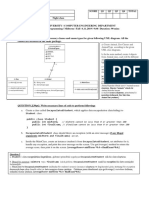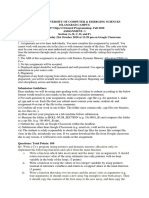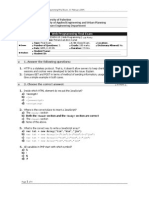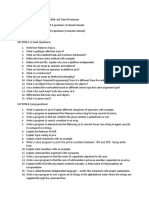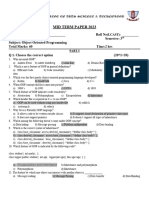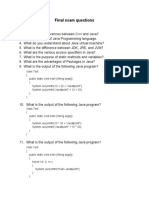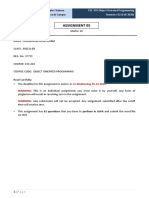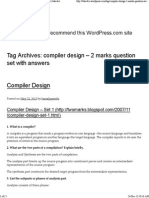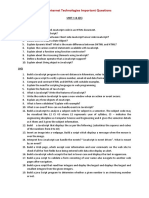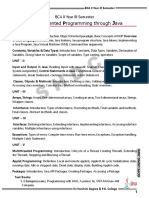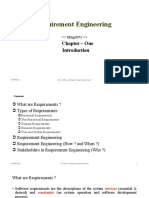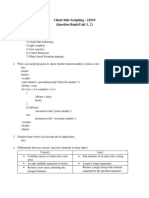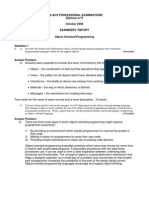0% found this document useful (0 votes)
885 views4 pagesOop Assignment 1
This document contains an assignment for an Object Oriented Programming course, with 5 questions asking students to compare procedural and object-oriented programming, provide examples of each, explain classes and objects with a real-world example, write code to create an instance of a Memo class, and write a Java program with a method, object creation, and calling the method. The questions are answered explaining the differences between procedural and object-oriented programming, providing programming language examples for each, using a car as an example class and object, and including code samples to meet the requirements.
Uploaded by
Yusuf Badau MagajiCopyright
© © All Rights Reserved
We take content rights seriously. If you suspect this is your content, claim it here.
Available Formats
Download as PDF, TXT or read online on Scribd
0% found this document useful (0 votes)
885 views4 pagesOop Assignment 1
This document contains an assignment for an Object Oriented Programming course, with 5 questions asking students to compare procedural and object-oriented programming, provide examples of each, explain classes and objects with a real-world example, write code to create an instance of a Memo class, and write a Java program with a method, object creation, and calling the method. The questions are answered explaining the differences between procedural and object-oriented programming, providing programming language examples for each, using a car as an example class and object, and including code samples to meet the requirements.
Uploaded by
Yusuf Badau MagajiCopyright
© © All Rights Reserved
We take content rights seriously. If you suspect this is your content, claim it here.
Available Formats
Download as PDF, TXT or read online on Scribd
/ 4
